Pine trees, predominantly native to the Northern Hemisphere, are renowned for their evergreen beauty and diverse species.
Belonging to the family Pinaceae and the genus Pinus, there are approximately 126 species of pine trees worldwide.
Known for their resinous nature, these trees are closely related to other conifers such as firs, cedars, and spruces.
Pine trees exhibit remarkable adaptability, thriving in varied environments like the cold regions of North America, rainforests, and even hot sandy deserts.
Notably, their wood, known as pine, is a versatile softwood used extensively in furniture, flooring, construction, and paper production.
This article delves into the intriguing world of pine trees, with a special emphasis on species with soft needles, exploring their unique characteristics and their role in our ecosystems and industries.
Pine Tree Characteristics
A signature trait of pine trees is their needle-like leaves, which grow in clusters known as fascicles.
These needles, particularly in species with soft needles, are a defining feature.
Pine trees are categorized into subgroups, including prominent types like Scotch Pine, Jack Pine, Black Pine, and Red Pine.
For instance, Pitch Pine trees typically have three soft needles per fascicle, making them easily identifiable.
Soft pine trees, often referred to as white pine trees, are especially noted for their soft, flexible needles.
The soft pines usually have longer needles and fewer scales on their cones compared to other pine species.
When it comes to light requirements, pines range from intolerant to moderately tolerant, with most species needing moderate to high levels of sunlight for optimal growth. Proper maintenance through expert tree trimming and removal can enhance their growth and longevity.
Pine Tree Identification
Identifying pine trees involves observing their needle-like leaves, seed-bearing cones, and distinctive bark, varying in color from reddish-brown to gray.
The shape of the cones, which often hang down from the branches, is another key identifier.
For example, pine trees with soft needles tend to have larger, woody cones that grow straight upward from the branches.
Pine Tree Needles
The needles of pine trees are remarkable, growing in bundles of 2, 3, or 5. Each bundle is known as a fascicle.
The length of pine tree needles can vary widely, with some species, like the Foxtail Pine, having needles as short as 2.5 cm, while others, such as certain soft needle varieties, can have needles up to 45 cm long.
Types of Pine Trees
More common types of pine trees species are available in the world.
1. Eastern White Pine Tree
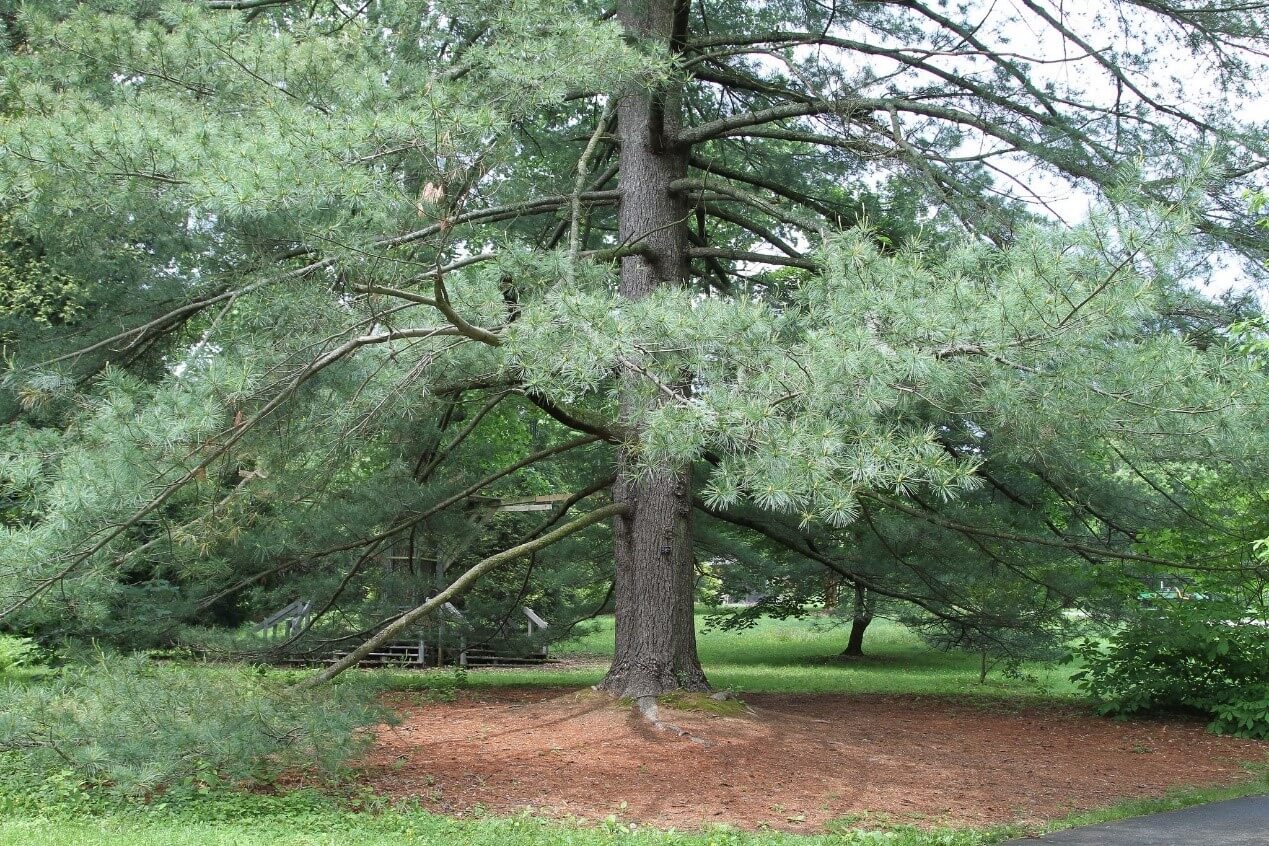
This tree is a notable species in North America, distinguished by its fast growth and stature as one of the tallest pine species.
Its needles are soft, growing in small clusters with a bluish-green tinge.
Commonly used as a Christmas tree, the Eastern White Pine is also popular for container growing.
Identification: It can reach heights up to 230 ft, with needle clusters composed of 5 soft pine needles.
2. Sugar Pine Tree
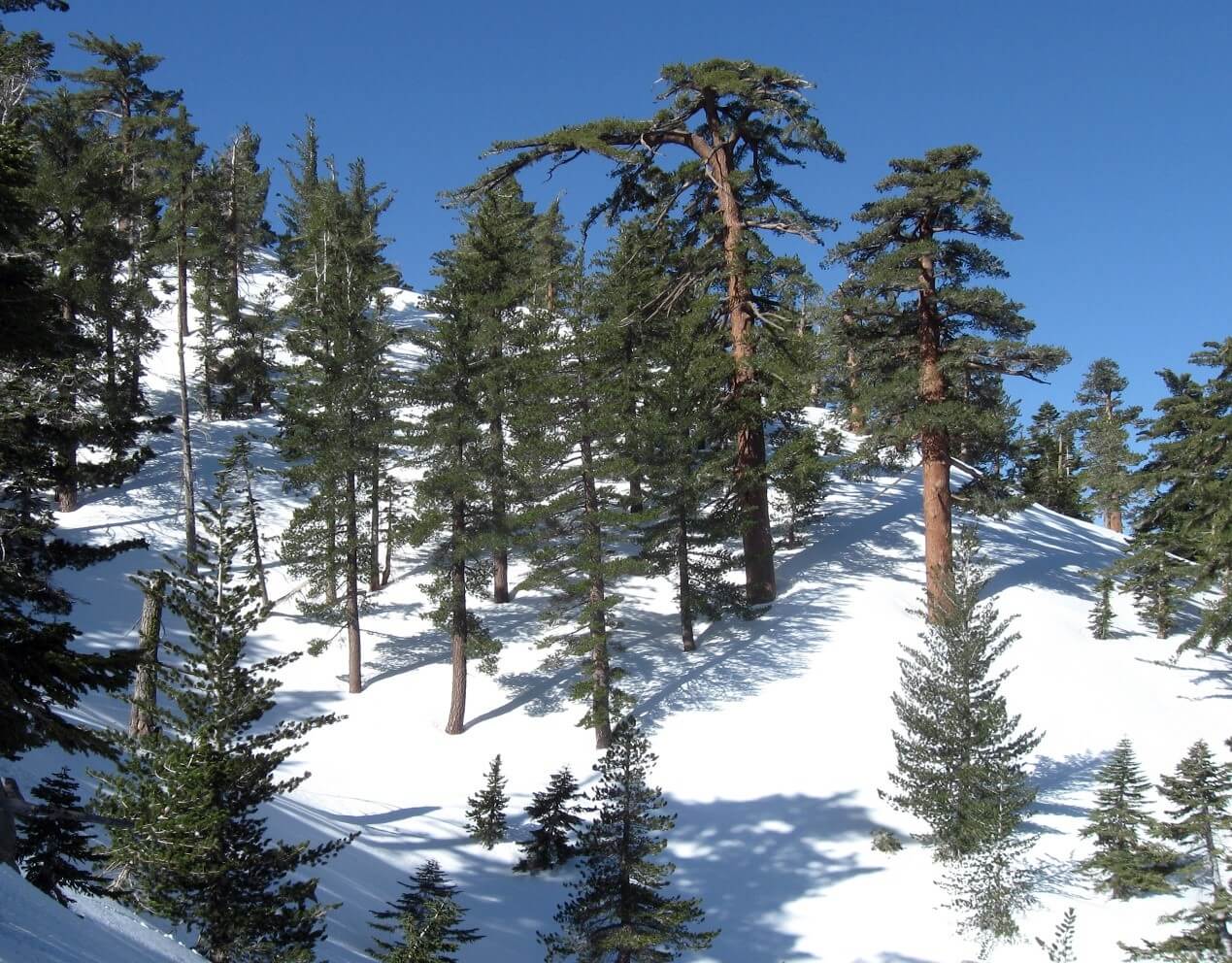
Known as the sugar cone pine, this is one of the tallest pine species globally. Its name derives from the sweet resin it produces.
The needles are a light green color with white lines and are soft to the touch.
Identification: Typically between 130 and 195 ft tall, the Sugar Pine’s needles can grow up to 14 cm long, and its cones up to 50 cm.
3. Red Pine Tree
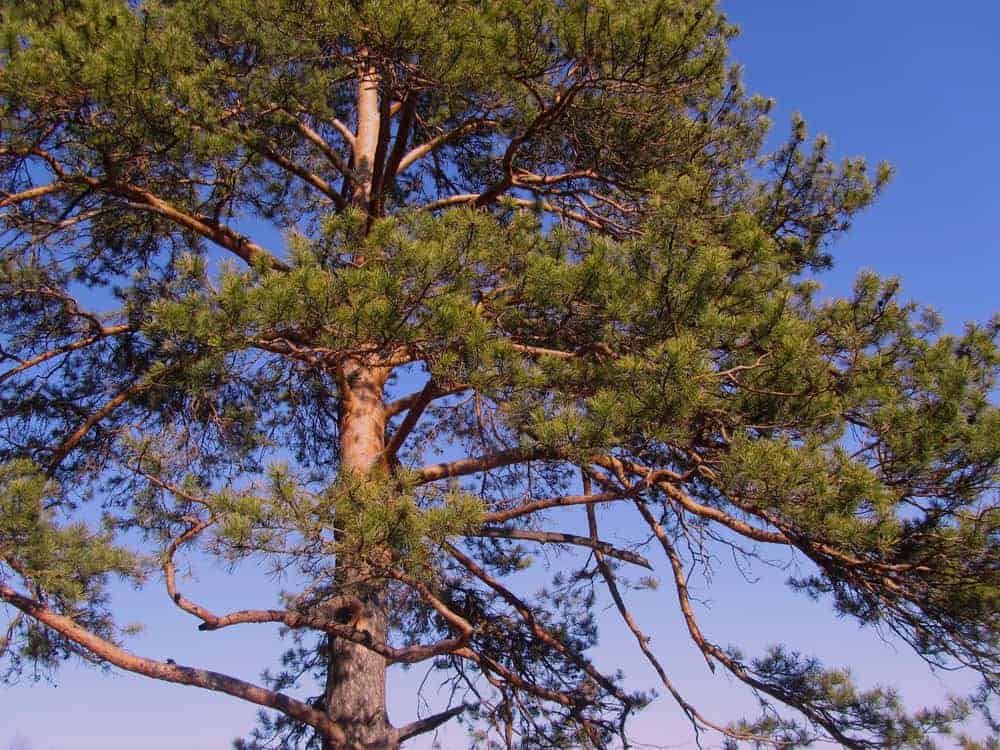
The Red Pine Tree, native to North America, is cherished for its majestic height and straight trunk.
Its bark is a distinctive red-orange, setting it apart in the forest. Primarily found in the northeastern United States and Canada, it’s valued for timber and landscaping.
Identification: Medium to large tree, typically 66 to 115 ft tall, with a straight trunk, red-orange bark, and pairs of long, brittle needles.
4. Gray Pine Tree

The Gray Pine Tree, also known as Foothill Pine or Digger Pine, thrives in the warm climates of California and Oregon.
Its most striking feature is the grayish-green needles that droop elegantly, creating a unique silhouette.
This tree adapts well to dry conditions and poor soils, often found in foothills and valley regions.
Identification: Medium-sized tree growing up to 35cm, with drooping gray-green needles and large, heavy cones; thrives in warm, dry areas.
5. Pitch Pine Tree

The Pitch Pine Tree stands out for its resilience, capable of surviving in poor soils and harsh conditions.
It’s named for its high resin content, which is useful in various industries.
This tree is commonly found in the eastern United States, displaying an irregular growth pattern with twisted branches.
Its needles are somewhat shorter than other pines and grow in three clusters.
Identification: Small to medium-sized, with a twisted, irregular shape, clusters of three needles, and a high resin content.
6. Scots (Scotch) Pine Tree

The Scots Pine, or Scotch Pine, is a highly adaptable tree with a wide distribution across Europe and Asia.
Known for its fast growth and hardiness, it’s widely used for timber and Christmas trees.
The bark is scaly and becomes distinctively orange at the top. Its needles are bluish-green, adding to its decorative appeal.
Identification: Tall tree, up to 114 ft, with short, bluish-green needle bundles and thick, scaly brown bark, often orange at the top.
7. Jack Pine Tree

The Jack Pine Tree is a hardy species, able to thrive in poor soil conditions.
It’s widely distributed in Canada and the northern United States.
The tree has a distinctive irregular shape, with short, twisted branches and dark green needles.
The cones of the Jack Pine are adapted to open with heat, a feature that allows for regeneration after forest fires.
Identification: Small to medium-sized evergreen with an irregular shape, dark green needles, and cones that open with heat.
8. Longleaf Pine

The Longleaf Pine is integral to the southeastern United States ecosystems and timber industry.
It’s known for its exceptionally long needles and large cones. This tree plays a crucial role in local biodiversity, offering habitat for numerous species.
It thrives in sandy soils and is fire-resistant, a characteristic essential to its habitat.
Identification: Tall tree, often 100 to 115 ft, with long, dark green needles and large cones; significant in the southern timber industry.
9. Shortleaf Pine
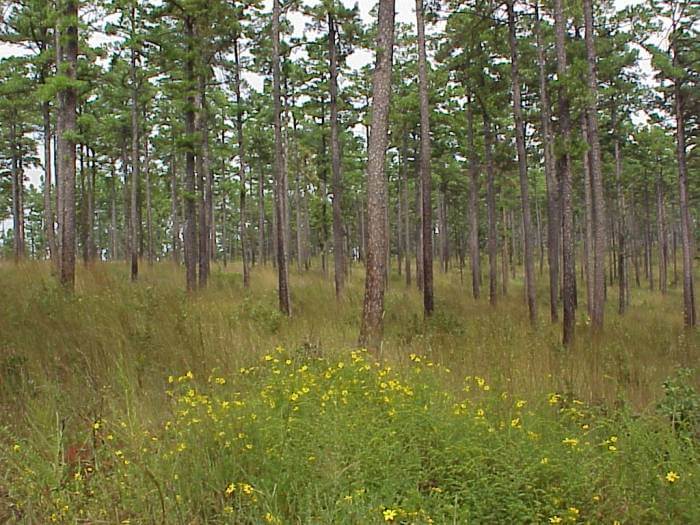
The Shortleaf Pine, part of the yellow pine group, is notable for its versatility and resilience.
It’s found throughout the southeastern United States, often in mixed forests. This species adapts to a range of soil types and is resistant to fire and disease.
It’s shorter and sturdier than other southern pines, with a dense crown of dark green needles.
Identification: Medium-sized tree, 65 to 100 ft tall, with small, reddish-brown cones and dark green needles, commonly found in mixed forests.
10. Bristlecone Pine Trees
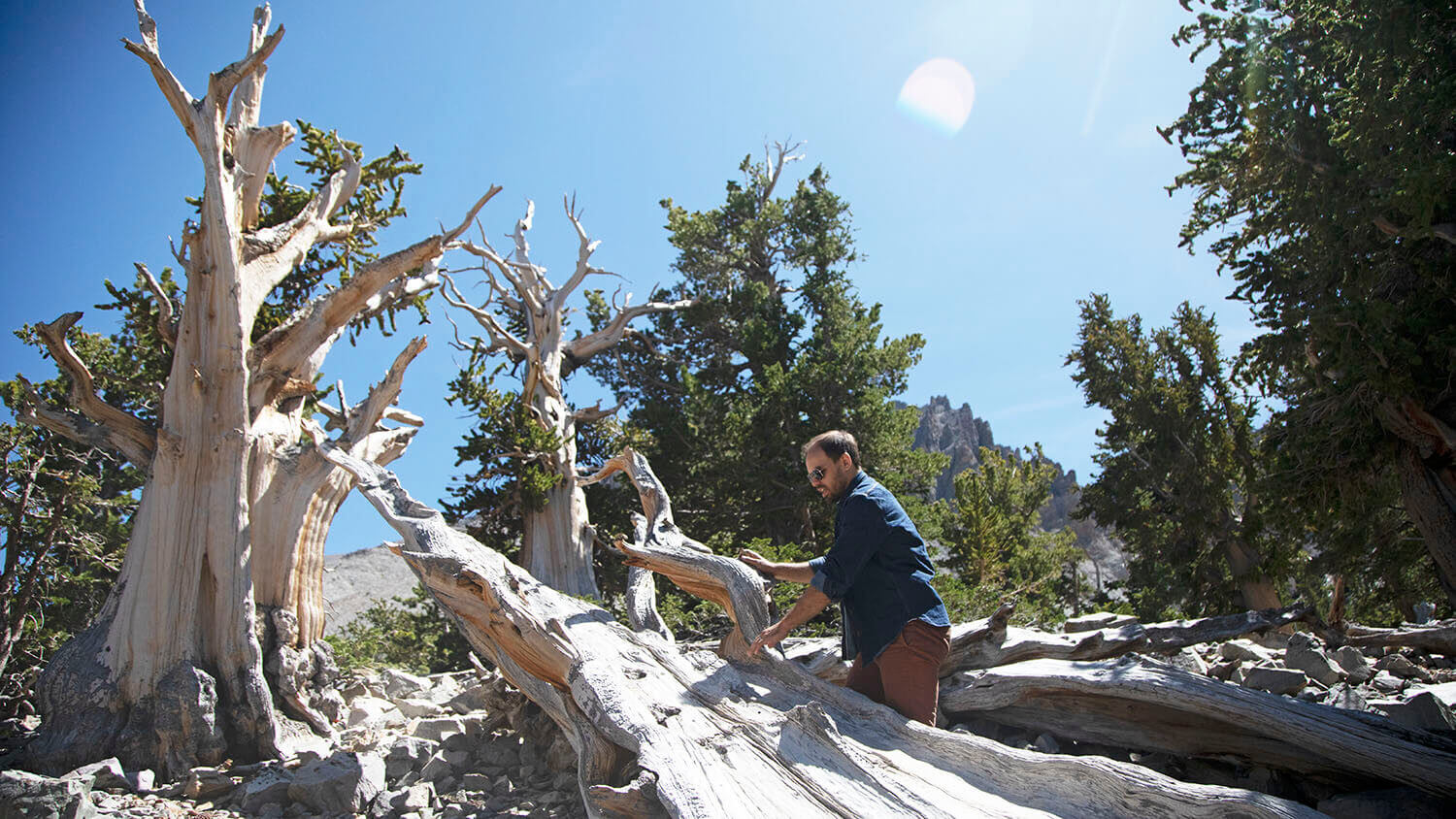
Bristlecone Pines are among the oldest living organisms on earth, known for their incredible longevity and resilience.
These trees thrive in harsh, arid mountainous regions of the western United States, particularly in California, Nevada, and Utah.
They possess a distinctive gnarled and twisted appearance with dense, resinous wood.
The needles, which can remain on the tree for over 40 years, contribute to its hardy nature.
Identification: Small, ancient trees with dense, short branches; needles persist for decades; typically found in high, arid mountainous regions.
11. Loblolly Pine Tree
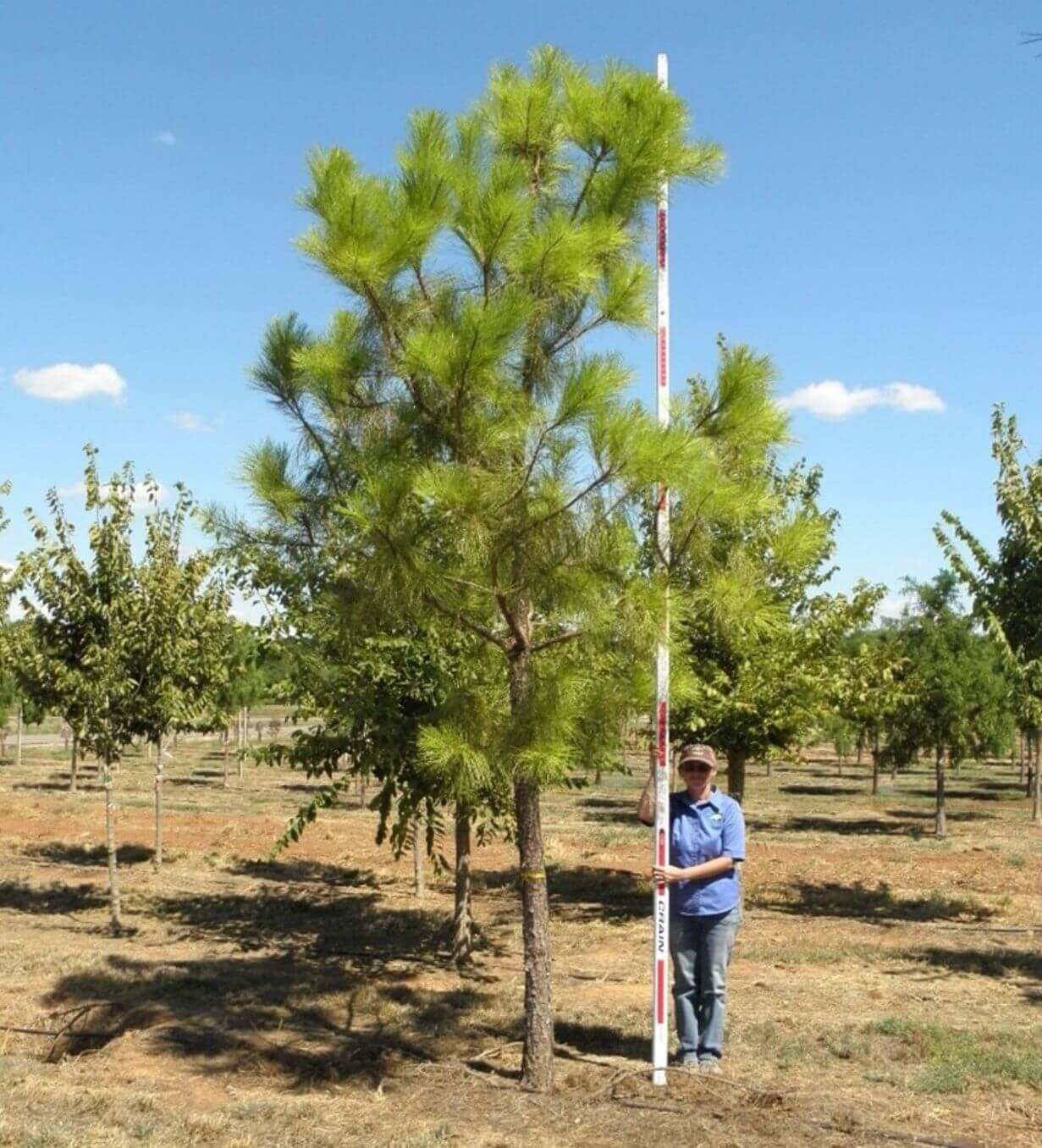
The Loblolly Pine, predominantly found in the southeastern U.S., is a vital species for the timber industry.
It grows rapidly and tall, with a straight trunk. This pine prefers acidic, moist soils and is commonly found in coastal plains and river valleys.
Its needles are longer than many other pines, giving the tree a full, lush appearance. The Loblolly is also used for pulpwood and reforestation.
Identification: Tall, fast-growing, with a straight trunk and long, dark green needles in three clusters; prefers acidic, moist soils.
12. Slash Pine Tree
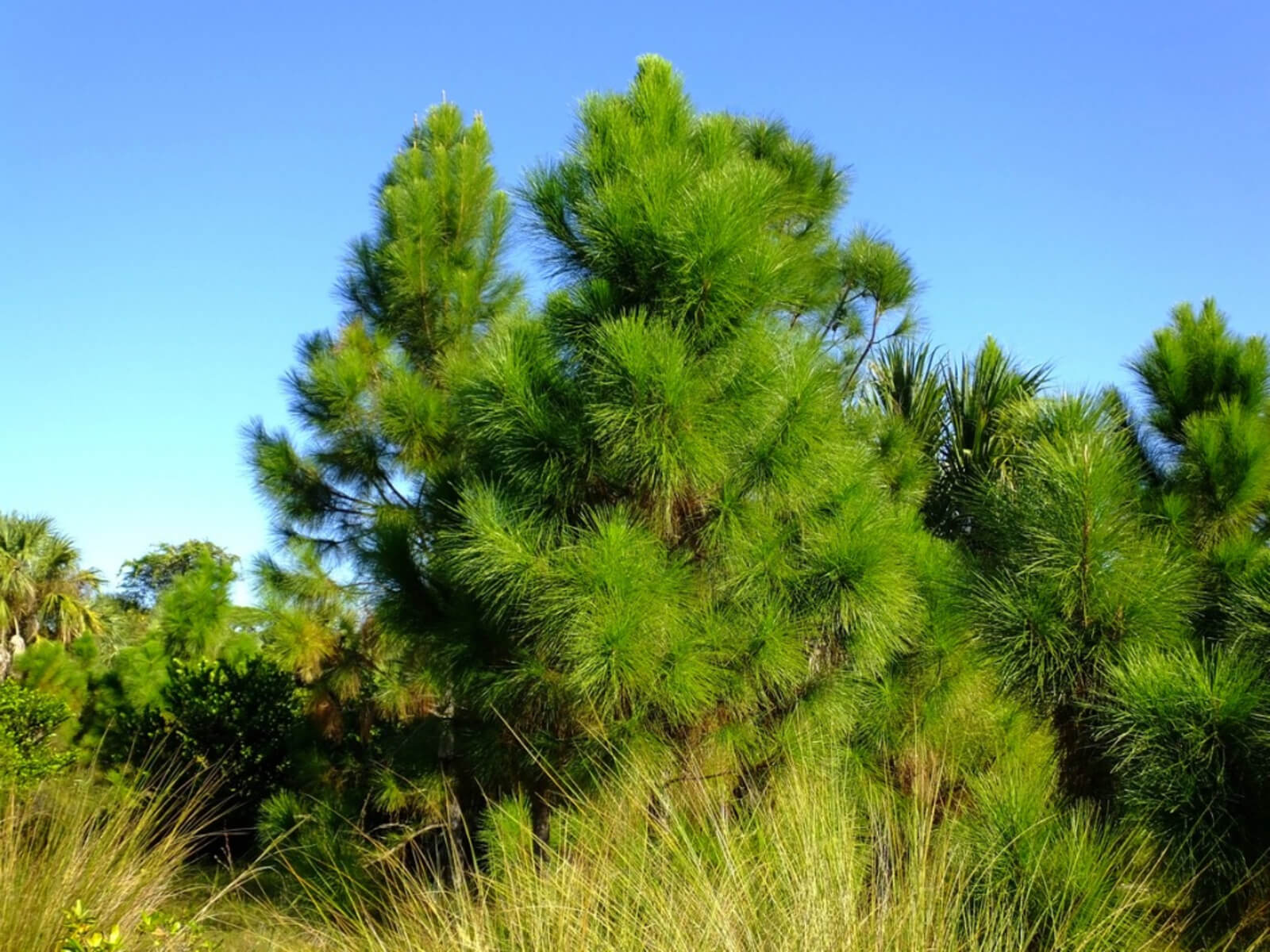
The Slash Pine is native to the southeastern United States and is particularly valued for its timber and pulp.
It grows quickly and has a straight, tall form, making it ideal for lumber.
The tree’s needles are long and slender, and its bark is deeply fissured.
The Slash Pine is also known for its large, glossy, reddish cones, a key identification feature.
Identification: Fast-growing with a straight, tall form; long, slender needles and large, glossy, reddish cones; valued for timber.
13. Virginia Pine Tree

The Virginia Pine, often used as a Christmas tree, is a medium-sized species known for its dense growth and short, twisted needles.
It’s commonly found in the eastern United States, particularly in poor, rocky soils.
The tree’s bark is thick and scaly, and it produces small, woody cones.
It’s a pioneer species, often one of the first to repopulate cleared or disturbed lands.
Identification: Medium-sized with dense, short, twisted needles; thick, scaly bark; small, woody cones; often found in poor, rocky soils.
14. Lodgepole Pine

The Lodgepole Pine is a slender, tall tree native to the western United States and Canada.
It thrives in cold, mountainous regions and is known for its ability to repopulate after forest fires quickly.
The tree has a high resistance to pests and diseases. Its needles are short and grow in bundles, and its cones are small and serotinous, opening only in response to high heat.
Identification: Tall, slender, with short, bundled needles and small serotinous cones; prevalent in cold, mountainous regions.
15. Ponderosa Pine Tree

The Ponderosa Pine is a large, majestic tree found throughout the western United States.
It is easily recognizable by its tall, straight growth and unique orange-red bark with black crevices.
The tree is highly valued for its lumber, which is used in construction and furniture making.
Its needles are long and grouped in threes, giving it a bushy appearance.
Identification: Tall, with distinctive orange-red bark and black markings; long, slender needles in three groups; prized for lumber.
16. Coulter Pine Tree

The Coulter Pine, native to California, is notable for having the heaviest cones of any pine species, which can be dangerous if falling.
The tree has long, gray-green needles and a robust, rugged appearance.
It’s found primarily in the coastal mountains and the southern Sierra Nevada.
The wood of the Coulter Pine is not highly valued due to its poor lumber quality, but the tree is a significant component of its native ecosystems.
Identification: Recognizable by its massive, spiny cones and long, gray-green needles, typically found in California’s coastal and mountainous regions.
17. Monterey Pine Tree
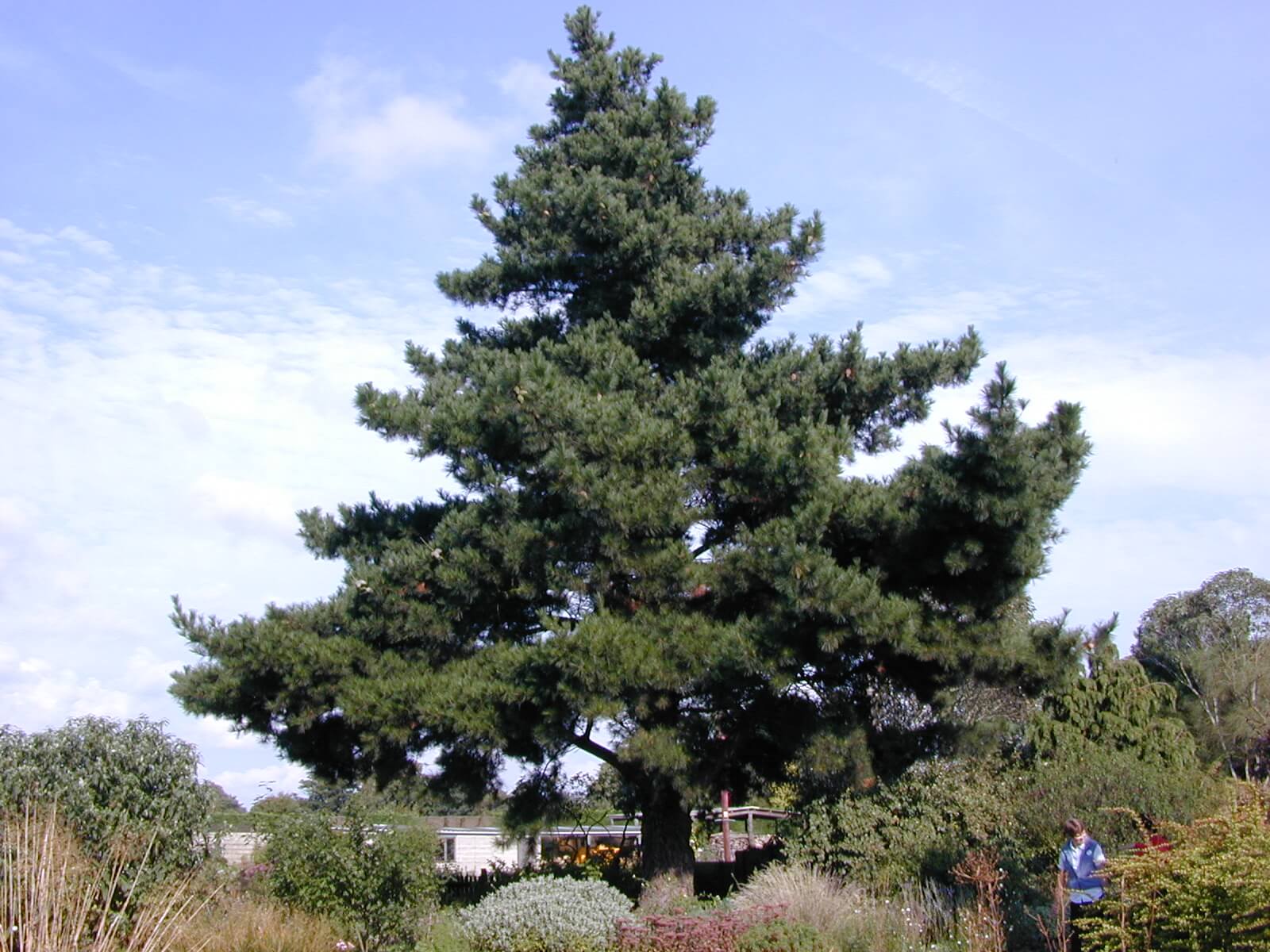
The Monterey Pine, native to the California coast, is celebrated for its rapid growth and tall stature.
It’s widely cultivated for timber in many parts of the world due to its adaptability.
The tree has a distinctive appearance with bright green, radiantly soft needles and large, egg-shaped cones.
It thrives in coastal environments and is often planted in parks and large gardens for its ornamental value.
Identification: Tall with a broad crown, bright green needles in clusters of three; large, egg-shaped cones; thrives in coastal environments.
18. Two Needle Pinyon Pine Tree

The Two Needle Pinyon Pine, commonly found in the southwestern United States, is a small and hardy tree known for its edible pine nuts.
It thrives in arid, rocky environments and has a slow growth rate.
The tree’s needles are short and grow in pairs, giving it a dense appearance.
Its resilience in tough climates makes it a key species in its native ecosystems.
Identification: Small, drought-resistant tree with short, paired needles and edible pine nuts; prevalent in the southwestern U.S.
19. White bark Pine Tree

The Whitebark Pine is a high-elevation tree found in the mountains of western North America.
It’s crucial for its ecosystem, providing food and habitat for wildlife.
The tree has a rugged appearance, with a twisted trunk and clusters of five needles.
Unfortunately, it’s facing threats from disease and climate change, making it a species of conservation concern.
Identification: Grows at high elevations, with a twisted trunk and clusters of five needles; threatened by disease and climate change.
20. Aleppo Pine
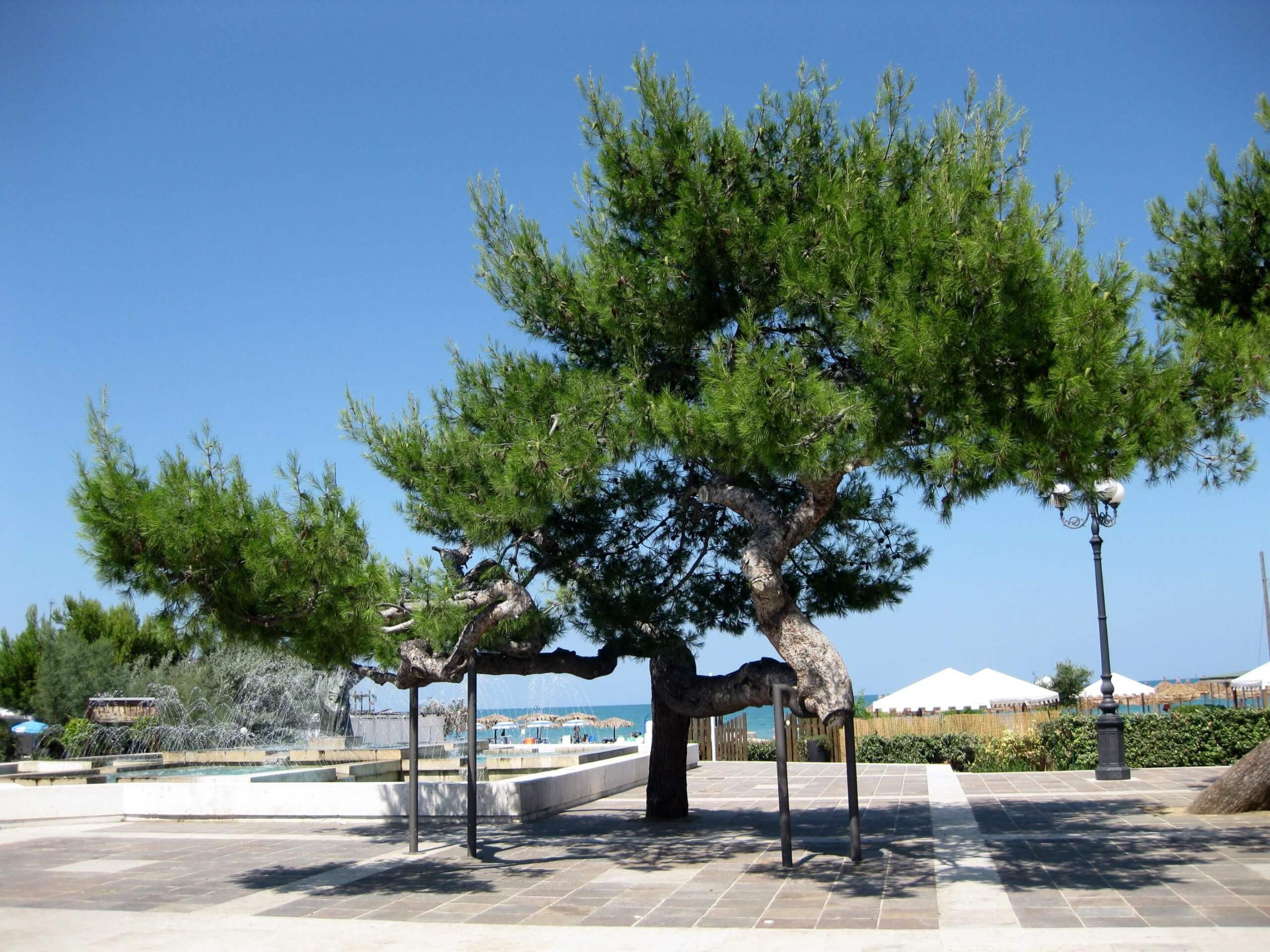
The Aleppo Pine, native to the Mediterranean region, is valued for its adaptability to warm, dry climates.
It’s often used in landscaping due to its attractive, dense foliage and tolerance to sea spray.
The tree has long, slender needles and produces small, conical cones.
It’s an important species for preventing soil erosion in coastal and arid environments.
Identification: Adaptable to warm, dry climates; long, slender needles; small, conical cones; used in landscaping and soil erosion control.
21. Austrian Pine

The Austrian Pine, also known as the European Black Pine, is prized for its robust nature and dense foliage.
It’s commonly used in landscapes for windbreaks and as a specimen tree.
Native to Europe, this pine is adaptable to various soil types and urban conditions.
It has long, dark needles and produces oval-shaped cones. The tree is also resistant to many pests and diseases.
Identification: Dark, long needles in dense clusters; oval-shaped cones; adaptable to various environments; resistant to pests and diseases.
22. Canary Island Pine
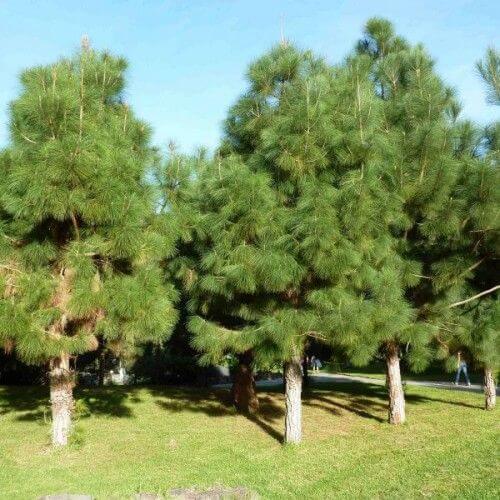
The Canary Island Pine, native to the Canary Islands, is notable for its unique, umbrella-like crown and long, flexible needles.
It’s well-adapted to volcanic soils and has a remarkable ability to regenerate after forest fires.
The tree is used in reforestation efforts and is valued for its aromatic timber.
It’s also a popular ornamental tree in warm climates.
Identification: Tall with an umbrella-like crown; long, flexible needles; well-adapted to volcanic soils; valued for aromatic timber.
23. Chir Pine Tree
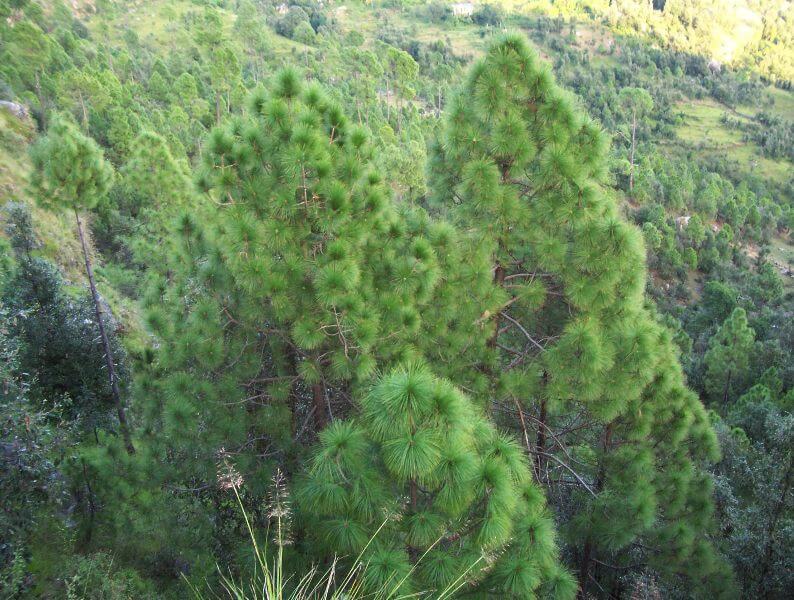
The Chir Pine, found in the Himalayan regions of Asia, is important for its timber and resin.
It grows well in hilly terrains and is used extensively in construction and furniture making.
The tree has long, slender needles and produces large, woody cones.
Its ability to thrive in less fertile soils makes it a valuable species for reforestation in its native areas.
Identification: Grows in hilly terrains; long, slender needles; large, woody cones; important for timber and resin in Himalayan regions.
24. Foxtail Pine Tree

The Foxtail Pine is a rare and unique species found primarily in the Sierra Nevada and Klamath Mountains in California.
It’s known for its dense, bushy branches resembling a fox’s tail and its longevity, often for thousands of years.
The tree grows in high alpine environments and has a striking appearance with smooth, gray bark and short, thick needles that cluster densely on the branches.
Identification: Rare, high alpine tree with bushy branches resembling a fox’s tail; short, thick needles; smooth, gray bark.
25. Italian Stone Pine
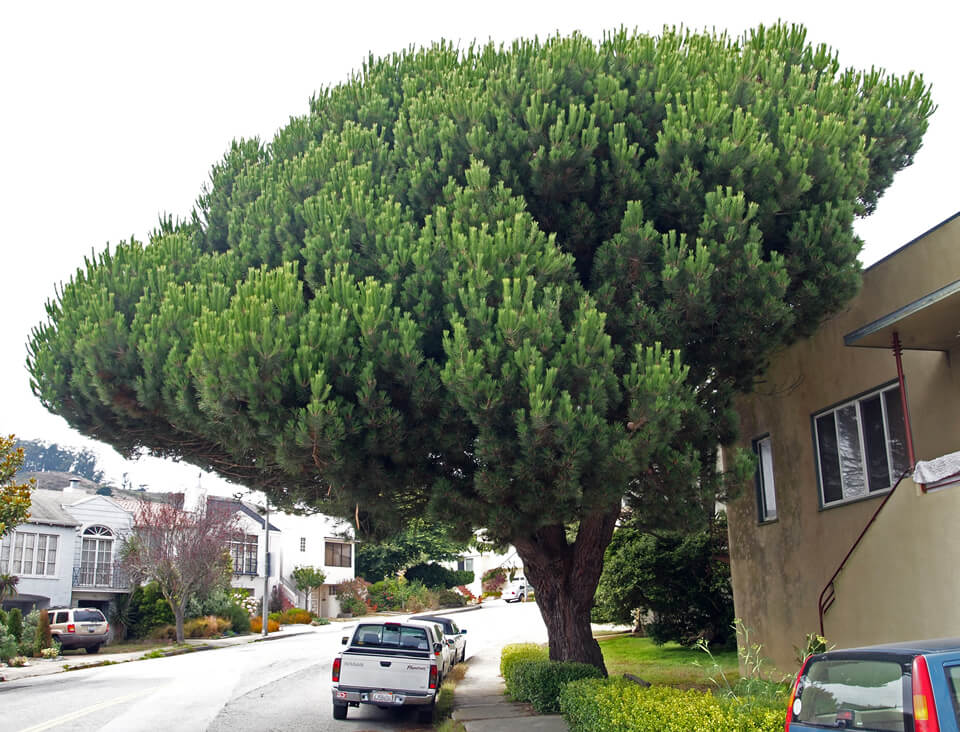
The Italian Stone Pine, with its iconic umbrella-shaped canopy, is a hallmark of the Mediterranean landscape.
It’s widely cultivated for both ornamental and practical purposes, including its edible pine nuts.
This pine thrives in warm, dry climates and is commonly found along coastal areas.
Its needles are long and dark green, adding to its aesthetic appeal. The tree is also used in windbreaks and for coastal stabilization.
Identification: Distinctive umbrella-shaped canopy; long, dark green needles; thrives in warm, dry climates; edible pine nuts.
26. Japanese Black Pine

The Japanese Black Pine is a robust, salt-tolerant tree often used in coastal landscaping and bonsai.
Native to Japan and South Korea, it’s known for its irregular, picturesque growth and strong, resilient nature.
The tree’s needles are dark green and grow in dense clusters, providing a stark contrast against its deeply furrowed, blackish bark.
It’s well-adapted to withstand coastal winds and poor soil conditions.
Identification: Salt-tolerant with irregular growth; dark green needles in dense clusters; deeply furrowed, blackish bark; popular in bonsai.
27. Japanese Whine Pine
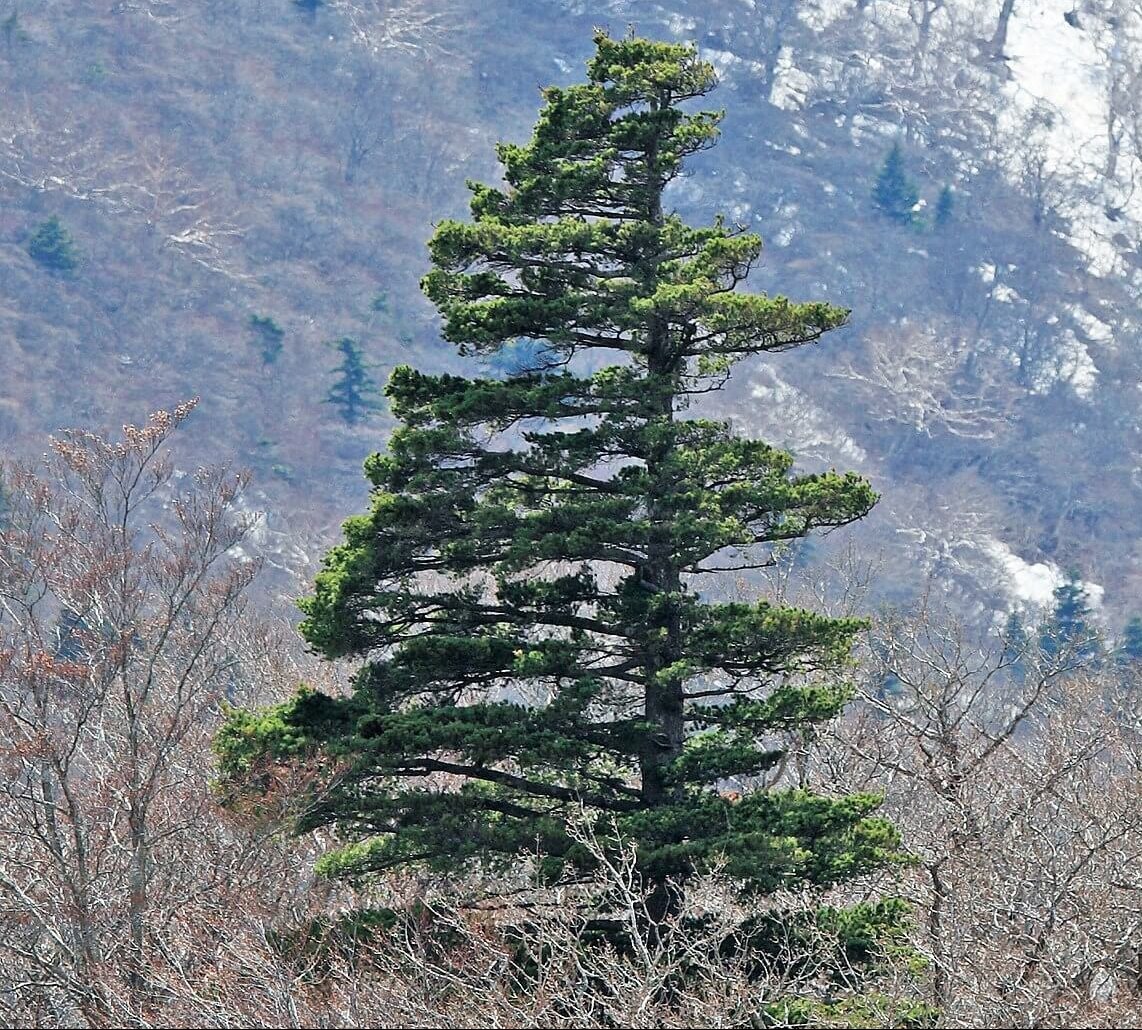
The Japanese White Pine is prized for its graceful, spreading form and delicate foliage, making it a favorite among bonsai enthusiasts.
This pine has a more refined appearance compared to the Black Pine, with softer, blue-green needles and a more open branch structure.
It’s a slow-growing tree, often seen in traditional Japanese gardens, and is valued for its aesthetic qualities and serene presence.
Identification: Graceful, spreading form; soft, blue-green needles; slow-growing; a favorite in bonsai and Japanese gardens.
Conclusion
The diverse world of pine trees offers a remarkable array of species, each with unique characteristics and ecological significance.
From the towering heights of the Ponderosa and Monterey Pines to the resilient and ancient Bristlecone Pines, these trees demonstrate remarkable adaptability and beauty.
Particularly noteworthy are pine trees with soft needles, such as the Eastern White Pine and the Foxtail Pine.
These trees add aesthetic value to our landscapes and play crucial roles in their native ecosystems.
Whether it’s for timber, environmental conservation, ornamental purposes, or even producing edible nuts, pine trees hold immense value.
Understanding these pines’ distinct traits and identification features is not just a matter of academic interest.
But also a step towards appreciating and preserving the rich biodiversity of our planet.
As we continue to explore and learn about these majestic trees, we deepen our connection to the natural world and our commitment to its stewardship.

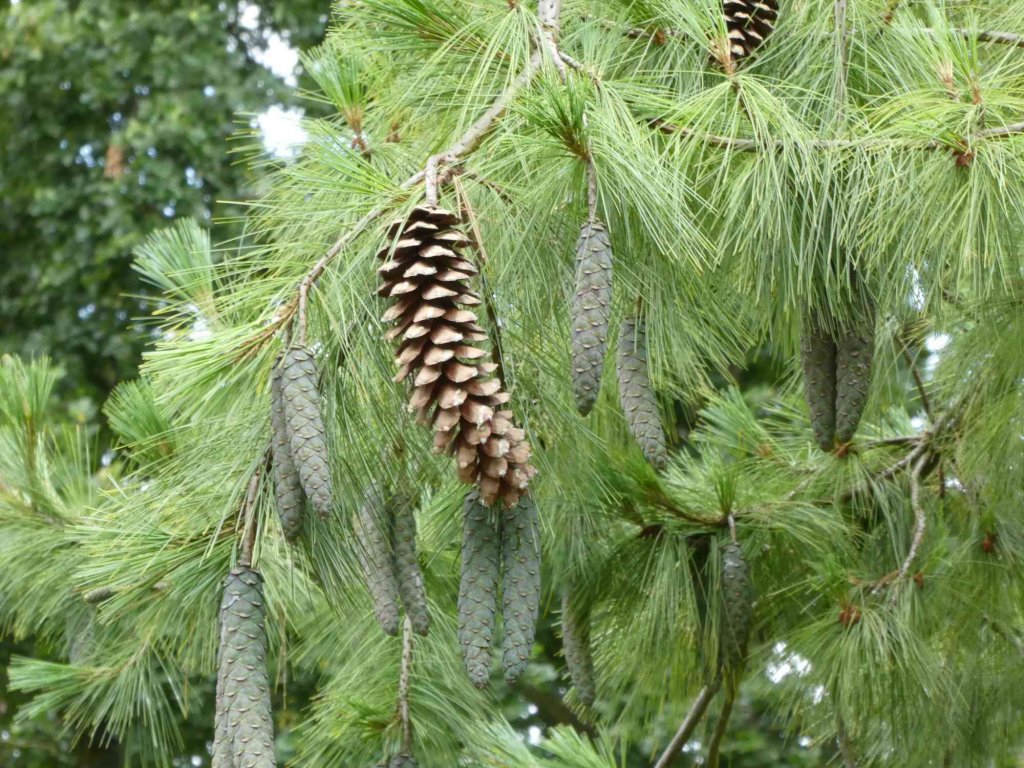
Do any other pine trees other than White pine have bundles of 5 needles? I believe you can drink pine needle tea safely from the white pine. Are there unsafe pine trees that would have bundles of 5 pine needles?
The Torrey Pine has fascicles of 5. Edible yes. Local indigenous people ate the nuts from this rare tree.
I have a question. I have seen what I think is a pine tree, it has sloping branches and quite lovely to look at. I’ve only seen one or two and they are about 5 feet tall. unfortunately, I’ve only seen them in passing. Maybe you could put me on a track to identify them. Thank you so much for any help you can give me.